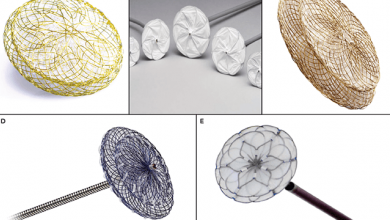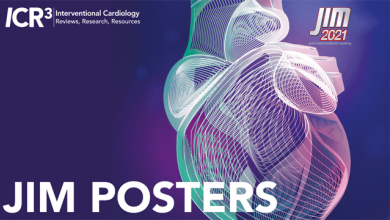Search results
Author(s):
Amit Bhan
,
Brian Clapp
Added:
3 years ago
The foramen ovale is an integral component of the fetal circulation, responsible for facilitating the flow of placental pre-xygenated venous blood from the right atrium to the left, thereby circumventing the quiescent developing lungs. Physiological closure is usually achieved after birth when pulmonary vascular resistance and right heart pressures reduce, resulting in the left atrial pressure…
View more
Author(s):
Joel P Giblett
,
Lynne K Williams
,
Stephen Kyranis
,
et al
Added:
3 years ago
Patent foramen ovale (PFO) is common and occurs in 20–34% of the population.1 In most infants, the foramen ovale closes soon after birth, with a reduction in pulmonary vascular resistance raising the left atrial pressure above that of the right atrium during the first few breaths, closing the septum. In a significant proportion of individuals, the primum and secundum atrial septa do not fuse, and…
View more
Author(s):
Joel P Giblett
,
Omar Abdul-Samad
,
Leonard M Shapiro
,
et al
Added:
3 years ago
Patent foramen ovale (PFO) is a common abnormality, occurring in 20–34% of the population.1 In the majority of infants, closure of the foramen ovale occurs soon after birth, as negative intrathoracic pressure associated with the first breaths closes the PFO. In some cases, the primum and secundum atrial septa fail to fuse and closure remains incomplete. There is continuing communication between…
View more
Author(s):
Joelle Kefer
Added:
3 years ago
Atrial septal abnormalities are common congenital lesions remaining asymptomatic until adulthood in a great number of patients. The most frequent atrial septal defects in adults are ostium secundum atrial septal defect (ASD) and patent foramen ovale (PFO), both approachable by transcatheter closure using device implantation. The first non-surgical ASD closure was performed in 1975 by Mills and…
View more
Coronary Artery Disease in SMI
Author(s):
Brian Tam To
,
Roman Roy
,
Narbeh Melikian
,
et al
Added:
11 months ago
Article
Author(s):
Alexander G Truesdell
,
Behnam Tehrani
,
Ramesh Singh
,
et al
Added:
3 years ago
Considering the unacceptably high mortality rate of patients with cardiogenic shock (CS) and the absence of widespread improvements in survival over recent decades, the time has arrived for the cardiovascular community to embrace a ‘combat’ approach to CS.1 In the past 20 years we have witnessed a revolution in the management of combat polytrauma towards a goal of zero preventable battlefield…
View more
Author(s):
Nilesh Pareek
,
Peter Kordis
,
Ian Webb
,
et al
Added:
3 years ago
Out-of-hospital cardiac arrest (OHCA) is defined as the sudden absence of cardiac mechanical contractility with loss of signs of circulation that occurs within a community setting.1 OHCA affects more than half a million patients globally per year and is one the leading causes of death in developing countries.2 In the US, OHCA affects 350,000 patients per year and is the third leading cause of…
View more
Author(s):
Vivian Dimas
,
Sebastian Tume
,
Iki Adachi
,
et al
Added:
3 years ago
Author(s):
Krystal Dinh
,
Lucy Manuel
,
Mauro Vicaretti
Added:
2 years ago
Author(s):
Göran K Olivecrona
,
Marko Noc
Added:
3 years ago
Although approximately 2,000,000 patients undergo PCI yearly worldwide, only a very small minority will suffer a protracted cardiac arrest episode during the procedure that results in death.1 Cardiac arrest itself in the catheterisation laboratory (cath lab) is not an uncommon event, but is usually rapidly resolved with cardiopulmonary resuscitation (CPR) and DC conversions in cases of…
View more















